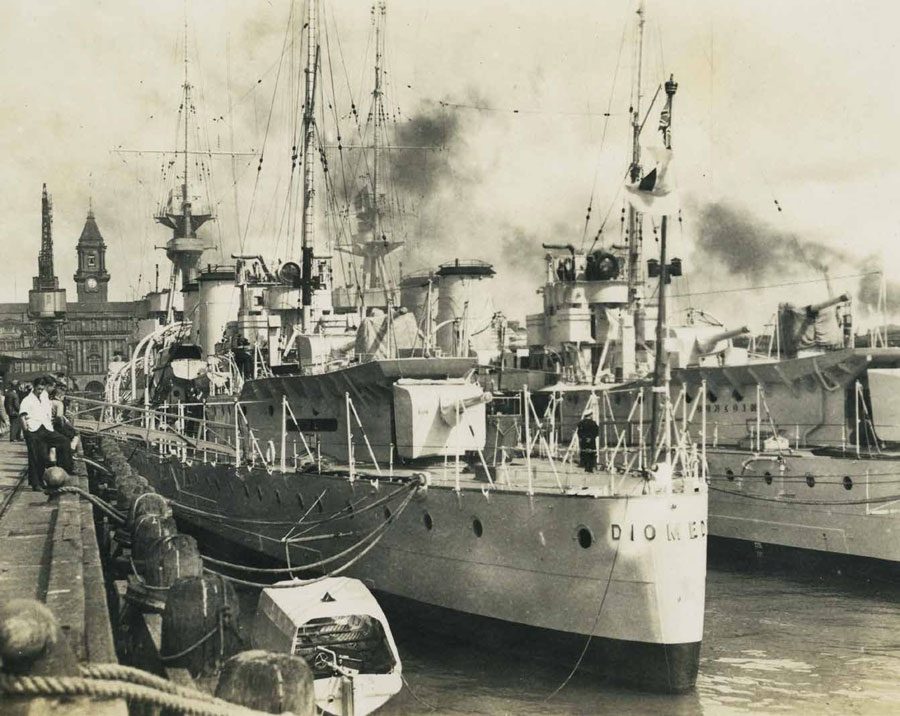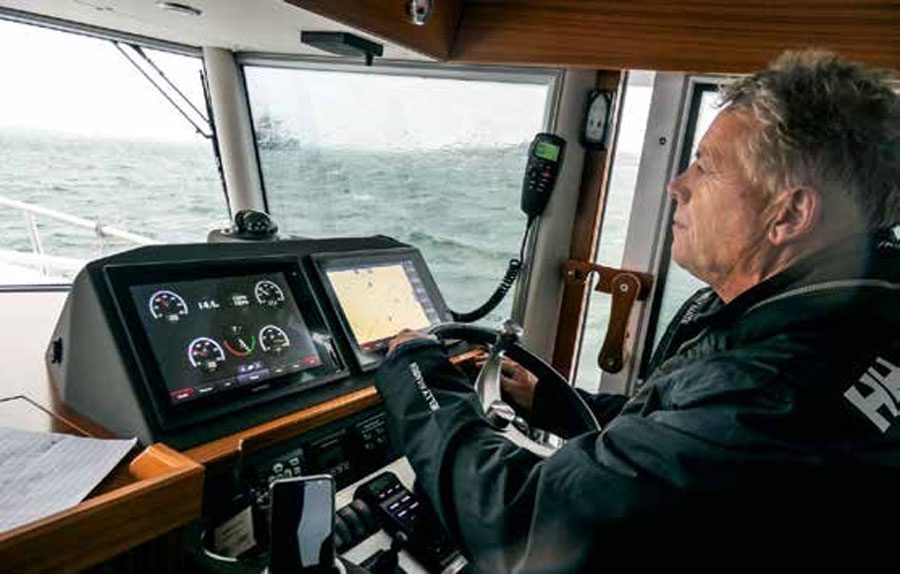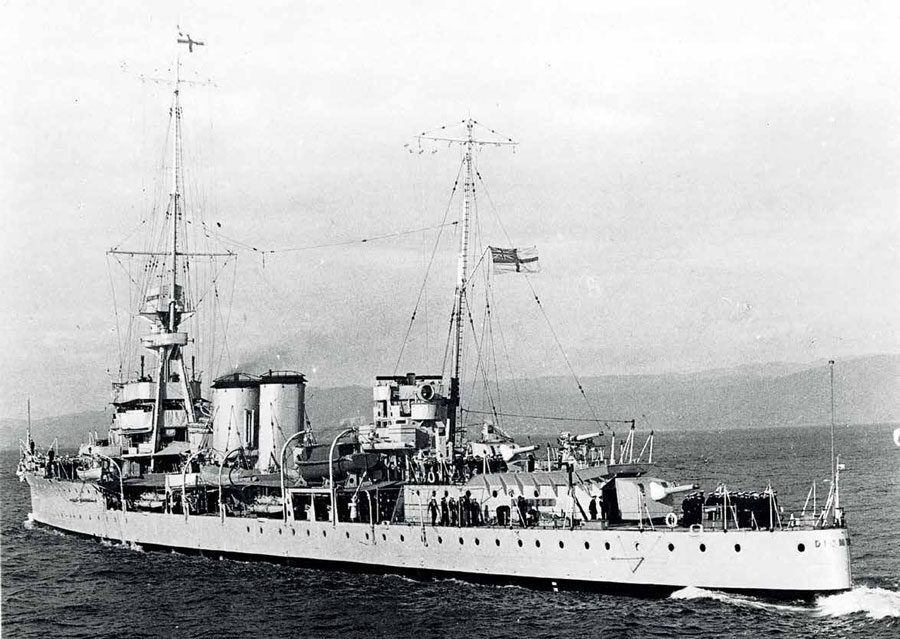

The Hewson family had a major involvement in the development of the sport of yachting in Auckland from the latter part of the 19th century until well into the 20th century.
They descended from George Berkeley Hewson, born in Hackney, London in 1804 and educated at Merchant Taylors’ School. He became a prominent ships’ chandler at the British Naval Base in Simonstown, Cape of Good Hope, in the 1830s.
There he married Sarah Miller in 1840. They had four sons, two of whom grew up in trades associated with shipping. Sometime after 1856, when their youngest son Joseph Caurier Hewson (born 1854), died at 15 months in Cape Town, George and Sarah moved to Victoria to follow the latest gold rush. George was killed when a mine pit collapsed on him.
The eldest son, Clarence Joslin Hewson (born 1841), became a shipwright in Simonstown. He moved to Auckland in 1866 where he carried on his trade and became a leading small yacht helmsman and oarsman. Auckland was the centre of the Pacific Islands trade, building cutters and schooners to carry goods and passengers from Auckland and around the fan of tropical islands in the western Pacific. It was also developing a lively yachting scene on the Waitemata.
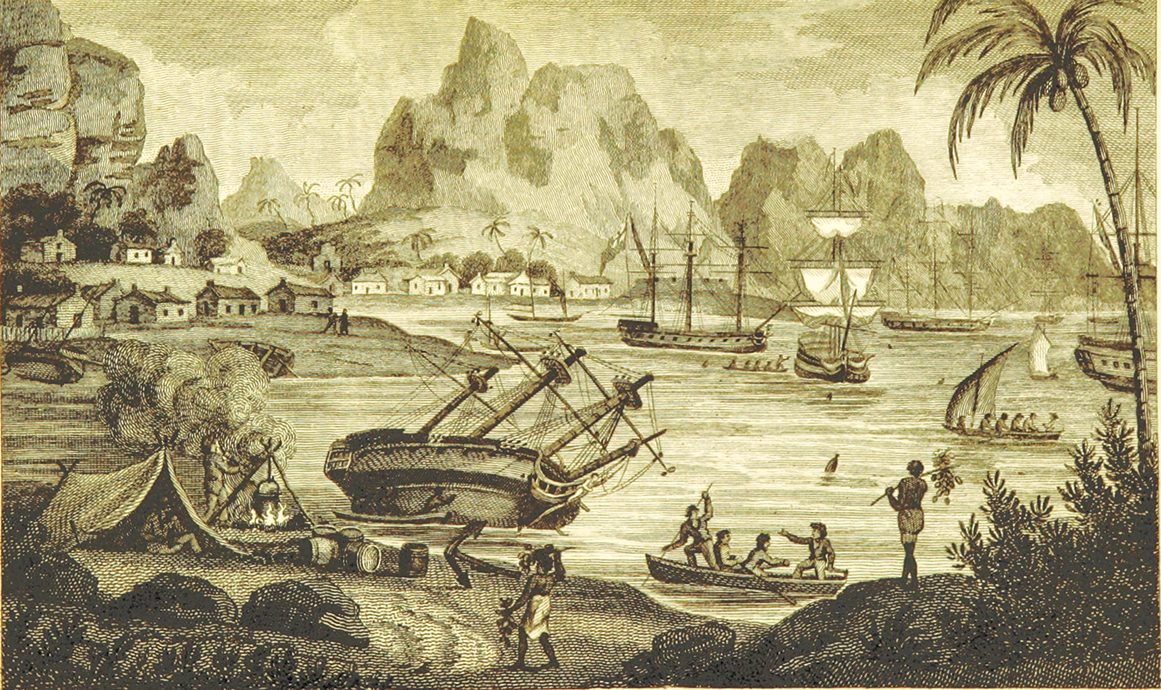
By the mid-1870s ‘Open Sailing Boat’ racing had become a sporting culture phenomenon. It had replaced the miscellaneous watermen’s boats and the Maori-owned whaleboat-type ‘peach boats’ of the regattas of the 1860s.
These Open Sailing Boats were undecked, usually centre-boarders, and raced in various classes based on length overall. The popular classes were 16-footers, 20-footers and 24-footers. Charles Bailey Jr refined the type and made his name, and a lot of money, by shipping his craft on little steamers to sail in the various regattas around the coast, winning the huge prize money on offer. This money was seeded by the timber-milling and gum-digging rough colonials’ mania for betting on horses, yachts and, indeed, anything that moved.
Clarence Hewson earned a solid reputation as a good boatbuilder and helmsman. In 1878 he built Alert, a crack 24-footer for Walter Jones, the crack Auckland amateur skipper, which was later purchased by King George of Tonga.
In early 1879, on the back of the reputation of Alert, he founded the boatbuilding firm of Hewson & Melville. Robert Melville was formerly the foreman with the prominent Auckland shipbuilders Henderson & Spraggon. The firm’s yard was at Wynyard Pier in Mechanics Bay. Clarence did the design work.
While Hewson & Melville lasted only briefly (1879–1885), they produced a large number of trading vessels, workboats, fishing boats and yachts, and gained a fine reputation. They built big cutters and schooners for locals and several for Fiji, including Black Prince in October 1881 and Tui Savura in November 1883.
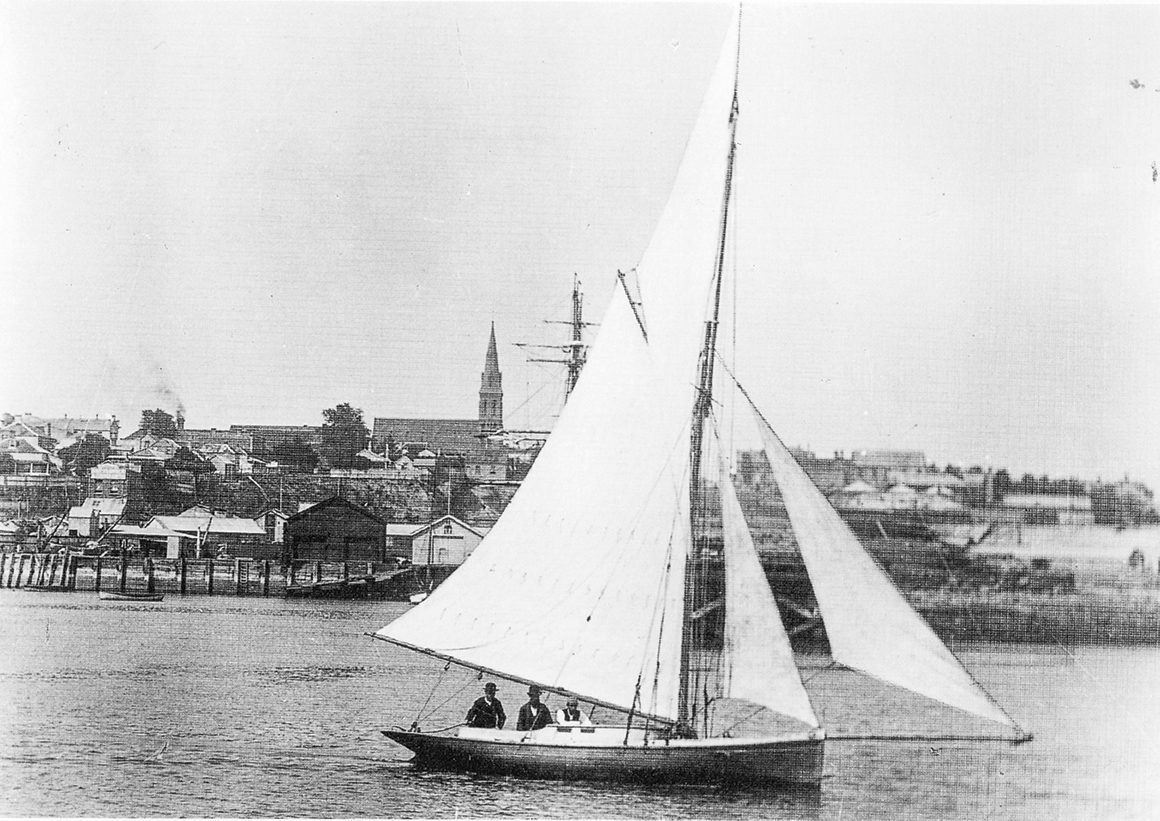
They tendered for and built a number of barges and punts for the Harbour Board and settlers along the coast and some fine, fast fishing craft such as the 9-ton City of Naples in 1880 and The Brothers in 1881 for Frank Williams, Penguin for J. Angelo in 1881, and Mignonette in January 1885 for John Gallagher. But the craft that got the most attention were the fast-decked yachts and Open Sailing Boats they built for Auckland yachtsmen.
These small yachts included Glance and Sybil in 1880, the rule-cheating (overall length was measured on deck) ram-bowed Maud in 1881 for Walter Jones, followed by the similar Minx a year later. Both were unsuccessful efforts to break the stranglehold Robert Logan’s Jessie Logan had on second-class yacht racing in Auckland.
Jones solved his problem by buying Jessie Logan in the winter of 1885. Another fast, half-decked yacht was Belle in 1883. In 1885 they built their final ram-bowed creation, the little Sylvia for Percy Dufaur.
Hewson & Melville were also among the leaders in the Open Sailing Boat classes. Their outstanding boats were Shrimp, a 24-footer built for McEwen in January 1881, Transit, a 20-footer they built for themselves in January 1882 (but usually raced by crack professional helmsman Sam Dove), Ely, a 16-footer built for George Warman in November 1882 and The Poet, a 20-footer built in November 1884 to replace Transit which had been lost in the Motuihe Channel at the beginning of the year.
After 1885, Clarence and Robert Melville went their own ways. Melville became involved in trade union matters while Clarence carried on boatbuilding in Freeman’s Bay. His most significant commission was the 6-ton yacht Matea for Walter Jones in November 1889 to replace Jessie Logan which Jones had sold to Wellington in October.
Matea was another ram-bow craft like Minx, a 26-footer “built on the American principle with large beam, wide tuck stern, and carrying centreplate”, said the Herald. In other words, a New England catboat type of hull. Clarence died in June 1901. Clarence’s younger brother, George Sunley Hewson (born 1843), found his way to England where he died in 1885.
The third brother, John Carrick Hewson (born 1844), went to sea from Simonstown and gained his Board of Trade second mate’s ticket in 1865. He came to New Zealand first in 1876 as mate on the full-rigged ship Crusader, a Shaw Savill immigrant vessel on the run to Lyttelton and Dunedin. While visiting his brother Clarence in Auckland, John met Ellen Strong and married her in July 1877.
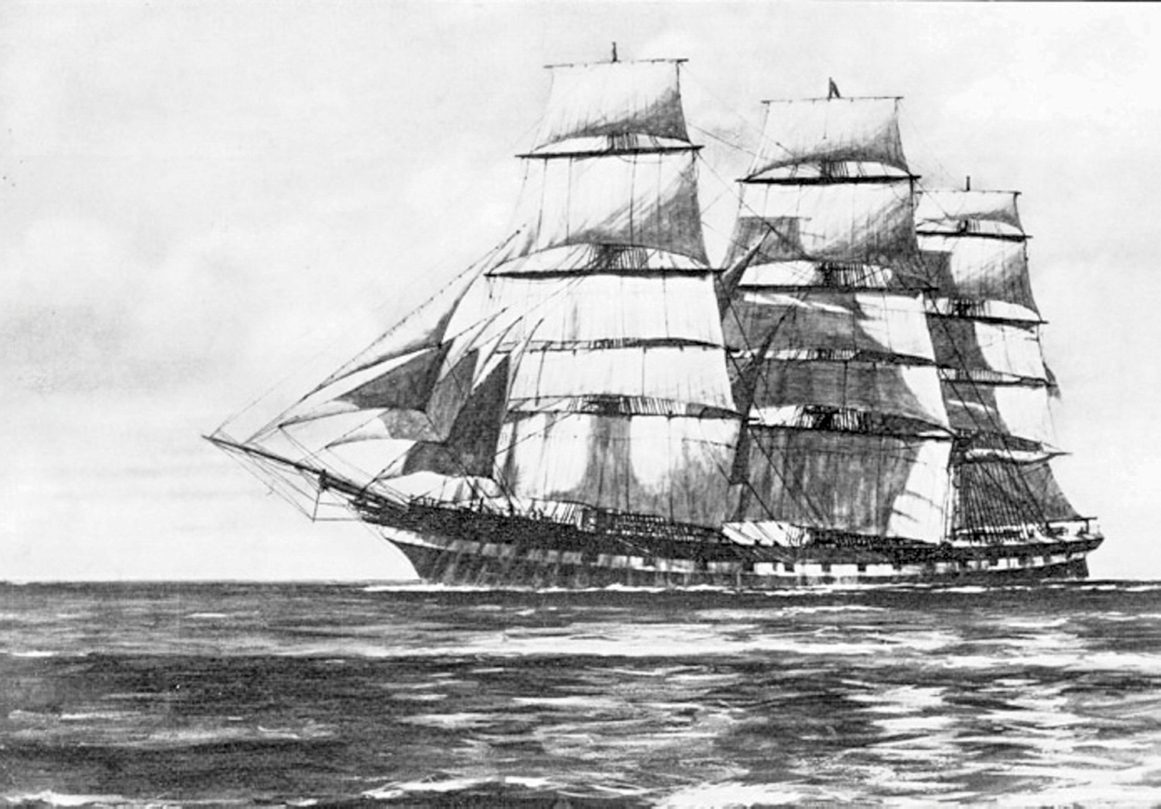
He soon joined the mosquito fleet of little steamers serving the Hauraki Gulf. In 1880 he was master of Planet, and from 1886 he had command of Waitoa on the run from Auckland to Clevedon, then known as Wairoa South. He was a popular man among the locals, who admired his seamanship.
Waitoa was a wooden twin-screw steamer built in 1882 by William Holmes of Devonport for miner J.H. Andrew and publican W. Burton, both of Thames. She was 70ft LOA and displaced 27 tons. The Thames River Steam Navigation Co bought her in 1884 and passed her on in 1886 to John Hewson and James Walker, who bought her in equal shares.
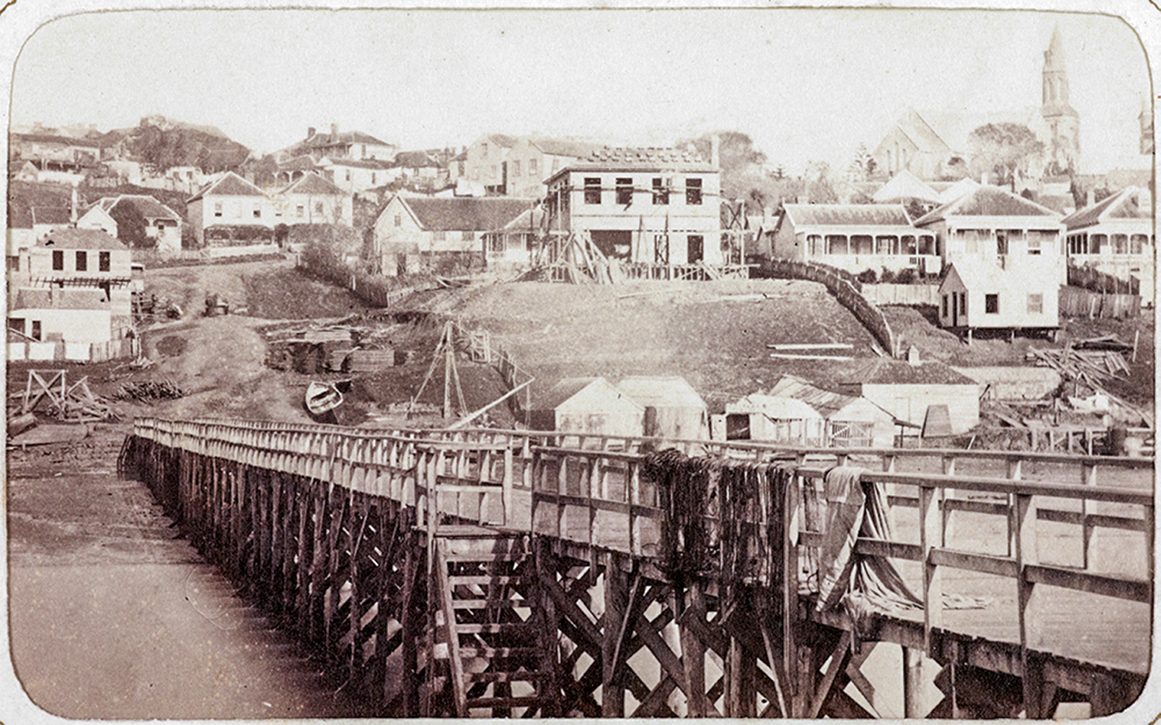
In 1892 they sold out to Auckland merchants Jagger & Parker who kept John Hewson in command. There were a couple of reported incidents, a collision with the Birkenhead ferry in March 1890 and a stranding in the Tamaki River because of a damaged propeller in May 1895. Captain Hewson was not found at fault in either case.

But in the evening of 4th February 1896, Waitoa was berthed alongside Barter’s wharf near Clevedon with a rope fast around one propeller, a common occurrence. Captain Hewson intended to wait until the morning to clear it from a dinghy. The Auckland Star reported, “Captain Hewson was last seen standing just below the bridge, and it is thought that he started to go up the three steps which intervened between him and the platform on which the wheel stands.
“His usual custom was to grasp the rail alongside these steps and jump up, and as the bolt holding this rail was found broken, it is thought that, the strain having broken it, it struck the captain on the forehead just between the eyes……causing him to fall back into the water. The night was particularly dark, and the accident was not witnessed, but the splash was heard by those on board. A hat was quickly found and, after a few minutes, a pair of arms were seen to rise above the water.”
A passenger, Langley, stripped off, dived for the Captain, and held him above the water until the passengers and crew took him aboard Waitoa by means of the dinghy. He was removed to Barter’s house nearby but died a few minutes later without regaining consciousness. His wife Ellen had eight children at home in Auckland – and was expecting a ninth.
In the next article I’ll deal with Captain John Hewson’s children and the large mark they made on Auckland yachting.


